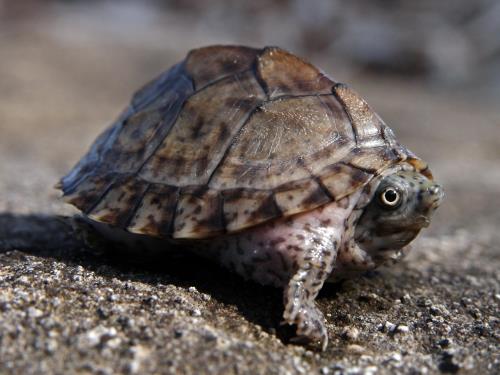
Turtles make incredible pets to love and share your home with. They are diurnal, meaning they are active during the day, which makes it much easier to enjoy seeing them in action. While they spend most of their time swimming in the water, they also love to bask under a warm light on a piece of décor in their terrarium. However, keeping them healthy requires providing them with proper UV lighting, as it is crucial for their well-being. Without it, they can develop bone deformities, become paralyzed, or even die. It’s important to educate yourself about their origins, habitat, diet, and how to recreate that environment in captivity before bringing a turtle home.
Things to Consider
Before diving into the different turtle species that make amazing pets and are beginner-friendly, there are a few important aspects to think about. First, turtles live most of their lives in the water, which means the water serves as their dinner plate, garbage disposal, and toilet. This results in the rapid buildup of waste, making regular filter maintenance and weekly water changes essential. Owning a turtle requires more effort compared to other reptiles. Second, turtles can live for over 100 years, although most pet turtle species have a lifespan of 25-40 years. Regardless, it’s a long-term commitment. Finding a new home for your turtle may not be easy, so ensure that you can provide a lifetime of care. Lastly, certain turtle species can grow quite large. While we will focus on smaller species, understanding their potential adult size and ensuring you have enough space for them and their aquatic habitat is crucial.
Mississippi Map Turtles

Mississippi Map Turtles are an excellent choice for beginners for several reasons. Firstly, they are smaller in size, with females reaching around eight inches and males growing up to five inches. This makes them easier to keep in a standard aquarium or turtle pond in your home. They are often found in permanent bodies of moving water, such as rivers and streams, as well as nearby ponds and lakes. These turtles love to bask and frequently stretch out their arms and legs on rocks or logs to soak up the sun. The lines on the scutes of their shell resemble topographical maps, giving them a unique and attractive appearance. With their intelligence and food motivation, they can become quite personable and often swim right up to their owners in search of treats. It’s easy to determine their gender as males have longer nails on their front feet.
Razorback Musk Turtles

Razorback Musk Turtles are another great option for beginners. The name “musk” comes from the musky odor they emit as a defense mechanism, although they rarely do so in captivity. Compared to other turtle species, they produce less waste, resulting in minimal smell. These turtles are almost fully aquatic, although they will occasionally come out to bask. They are less active than other types of turtles and prefer a sedentary lifestyle. In the wild, they spend most of their time in shallow water hunting for invertebrates and small fish. While they may not bask as frequently, it’s important to provide them with a spot to climb out and soak up some rays. As ambush predators, they have strong jaws, so caution should be taken when handling them.
Eastern Box Turtles

Now let’s shift our focus outside the water. Box turtles are often overlooked as pet turtle options, as they spend most of their lives on land, with rare encounters near water. When they do come across water, it’s typically in swamps or marshes with shallow waters and plenty of debris to climb onto. This makes them a convenient choice for turtle owners, as there is no water to change or filters to clean. Eastern Box Turtles, found throughout the eastern and central parts of the United States, inhabit forests and grassland habitats. They spend their time burrowing in the dirt and leaf litter, searching for food and exploring their surroundings. In the wild, they consume a variety of insects, vegetation, and even carrion. As pets, they require a diverse diet, including options like Zilla Reptile Munchies Omnivore Mix and mealworms as treats, along with live foods and fresh vegetables.
Shell-abrate Good Times, COME ON!
While the above information provides a starting point, it’s important to conduct additional research online and consider purchasing a good book specific to the type of turtle you decide to welcome into your home. Turtles are found on every continent except Antarctica, and their specific habitat requirements can vary greatly. By providing them with the right habitat, proper heating, lighting, and a well-balanced diet, you can enjoy decades of companionship with your turtle friend.
For more exciting news and articles, visit HOT NEWS DAY.